








President
term: 2011-2013
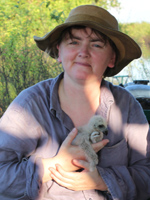 Ruth Tingay
Ruth Tingay
United Kingdom
e-mail: dimlylit100@hotmail.com
Ruth Tingay is a British-based raptor researcher with field experience from North & Central America, Europe, Africa, Middle East, and Central & South East Asia. Supported by The Peregrine Fund, she studied the critically endangered Madagascar Fish Eagle for a M.Sc. (2000) and Ph.D. (2005) at the University of Nottingham, UK. She currently is involved with projects in Scotland, Cambodia, Mongolia, Solomon Islands and South Africa.
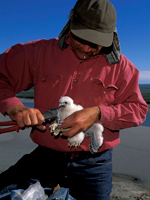 Ted Swem
Ted Swem
Branch Chief, Endangered Species
Fairbanks Fish and Wildlife Field Office
U.S. Fish and Wildlife Service
101 12th Ave., Room 110
Fairbanks, AK 99701 U.S.A.
voice: 907-456-0441
fax: 907-456-0208
e-mail: ted_swem@fws.gov
Ted Swem earned degrees from Boise State University (M.S., Raptor Biology, 1996) and Colorado State University (B.S., Zoology). Ted has been involved in raptor monitoring projects in Alaska since the mid-1970s, and now works in endangered species management for the U.S. Fish and Wildlife Service. He continues working with raptors as an avocation, and enjoys birding, wildlife photography, exploring Alaska’s backcountry, and a variety of poorly-played sports. He served one term on RRF’s Board of Directors, and is in his second term as Vice President.
 Greg A. George
Greg A. George
Assistant Professor of Biology
Delaware Valley College
Doylestown, PA 18901 U.S.A.
voice: 215-489-2210
e-mail: gregory.george@delval.edu
Greg George earned his Ph.D. in Wildlife Management from West Virginia University in 2009, and since then he has been on the biology faculty at Delaware Valley College, where he teaches courses in ornithology, ecology, and tropical ecology. Greg is particularly interested in Neotropical migrants and migration ecology (raptors and passerines) and has regularly volunteered with the Research Department at Hawk Mountain Sanctuary since 1994.
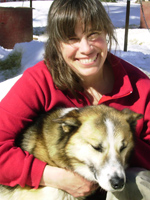 Angela Matz
Angela Matz
Environmental Contaminants Program Leader
Fairbanks Field Office
U.S. Fish and Wildlife Service
101 12th Ave., Room 110
Fairbanks, AK 99701 U.S.A.
voice: 907-456-0442
fax: 907-456-0208
e-mail: angela_matz@fws.gov
Angela Matz earned degrees from the University of Maine (Ph.D. Wildlife Ecology, 1997), Western Washington University (M.S., Environmental Toxicology), and Santa Clara University (B.S., Biology). She now resides in northern Alaska where she works for the US Fish and Wildlife Service in the Environmental Contaminants program, and studies pollution as it affects wildlife, including raptors. She enjoys river trips and Alaska Combat Gardening in the summer, mushing and skiing in the winter, and balancing RRF’s books year-round.
 Leonard Young
Leonard Young
1640 Oriole Lane NW
Olympia, WA 98502, U.S.A.
voice: +1-360-561-8125
e-mail: leonardyoung1@comcast.net
Leonard Young serves as Department Supervisor with Washington State Department of Natural Resources (DNR). Lenny received an M.S. degree in Wildlife Biology from the University of Montana in 1983 and worked for 5 years as a biologist with U.S. Bureau of Land Management’s Snake River Birds of Prey Research Project before joining DNR in 1989.
 Miguel D. Saggese
Miguel D. Saggese
Assistant Professor of Veterinary Microbiology and Avian/Wildlife Diseases
College of Veterinary Medicine
Western University of Health Sciences
Pomona, CA 91766 U.S.A.
voice: 909-706-3532
e-mail: msaggese@westernu.edu
Miguel Saggese earned a veterinary degree from the University of Buenos Aires, Argentina; completed a three year residency and a Master’s degree at The Raptor Center – University of Minnesota; and a Ph. D on avian infectious diseases at the Schubot Center, Texas A&M University. As a veterinarian, microbiologist, and raptor researcher, his main interests are focused on investigating the role that infectious diseases have on wild raptor populations, the conservation and population ecology of Patagonian birds of prey, and the impact of spent lead ammunition on scavengers. As an RRF Director, his main interest is to promote education of raptor researchers and students worldwide.
 Clint W. Boal
Clint W. Boal
Assistant Unit Leader – Wildlife and Associate Professor of Wildlife Ecology
USGS Texas Cooperative Fish and Wildlife Research Unit
Department of Natural Resources Management
Texas Tech University
Lubbock, TX 79409 U.S.A.
voice: 806-742-2851
e-mail: clint.boal@ttu.edu
Clint Boal earned his M.S. from the University of Arizona in 1993 where he studied food habits of Northern Goshawks, then earned his Ph.D. from the University of Arizona in 1997 studying the demography and ecology of urban Cooper’s Hawks. Following post-doctoral research at the University of Minnesota, he became the Assistant Unit Leader of the USGS Texas Cooperative Fish and Wildlife Research Unit at Texas Tech University in 2000. In his current position, he instructs graduate courses in wildlife ecology and continues to conduct research on birds of prey, passerines, and game birds in context of changing landscapes and climate.
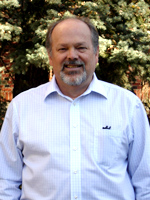 Michael W. Collopy
Michael W. Collopy
Assistant Vice President for Research & Director, Academy for the Environment
University of Nevada, Reno
202 Ross Hall/MS 436,
Reno, NV 89557-0192 USA
voice: 775-784-8262
e-mail: mcollopy@unr.edu
Mike Collopy received his Ph.D. in Natural Resources from the University of Michigan in 1980. Since that time he served on the faculty and was later Chair of the Department of Wildlife and Range Sciences at the University of Florida (1980-1991). He moved to Corvallis, OR, in 1991 to become the founding director of the Oregon State University-based BLM Cooperative Research Unit and, later, the USGS Forest and Rangeland Ecosystem Science Center. Mike left USGS in 2001 to become Chair of the Department of Natural Resources and Environmental Science at the University of Nevada, Reno. In 2004, he became the founding Director of the university’s Academy for the Environment; in 2009, added to this assignment by becoming UNR’s Assistant Vice President for Research. Mike has been an active participant in RRF since 1973, serving in a number of Board and Officer capacities during that time. His research activities have largely been conducted through his many graduate students, and have involved Golden Eagles, Bald Eagles, Harpy Eagles, Swainson’s Hawks, Aplomado Falcons, American Kestrels, and Snail Kites.
Carol L. McIntyre
Wildlife Biologist
Denali National Park and Preserve
4175 Geist Road
Fairbanks, Alaska 99708, USA
voice: 907-455-0671
e-mail: carol_mcintyre@nps.gov
Carol McIntyre received her Ph.D. in Wildlife Science from Oregon State University in 2004. Since 1987, she has been a wildlife biologist at Denali National Park and Preserve, Alaska, where her research focuses on the ecology of Golden Eagles, Gyrfalcons, and other birds. Carol also currently serves on the board of the Alaska Bird Observatory, on the steering committee of the Alaska Raptor Group (a subcommittee of Boreal Partners in Flight), and as Associate Editor for the Journal of Raptor Research.
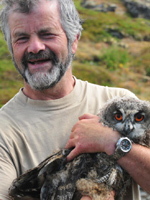 Torgeir Nygård
Torgeir Nygård
Senior Researcher
Department of Terrestrial Ecology (NINA)
NO-7485 Trondheim, Norway
office: +47 73801462
cell: +47 93466201
e-mail: torgeir.nygard@nina.no
Torgeir Nygård has a Ph.D. in raptor ecotoxicology from 1997, and has been on the staff at NINA since 1983. His research has focused mainly on raptor ecology and toxicology, but he also has been involved in research on seabirds. During recent years he has been using satellite telemetry to investigate the dispersal of Golden Eagles, White-tailed Eagles, Eagle Owls, and Gyrfalcons, and he currently is involved in risk assessments of raptors exposed to wind farms. During 2007-2010 he organized the collecting of White-tailed Eagles in Norway for reintroduction to Ireland.
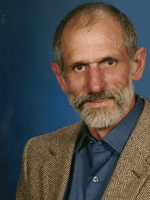 Michael N. Kochert
Michael N. Kochert
U. S. Geological Survey
Snake River Field Station
970 Lusk Street
Boise, ID 83330 U.S.A.
voice: 208-426-5201
e-mail: mkochert@usgs.gov
Mike Kochert is an Emeritus Scientist with the U.S. Geological Survey. He has conducted research on numerous raptor species for more than 40 years and is continuing his 40+ year work on Golden Eagles nesting in the Morley Nelson Snake River Birds of Prey NCA. He has been a member of RRF since 1971. In addition to the Board of Directors, he has served as President, Vice President, Conferences Committee Chair, and on numerous ad hoc committees.
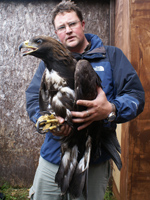 Marc Ruddock
Marc Ruddock
Cemetery Cottage
12 Church Street
Greyabbey, County Down
Northern Ireland, BT22 2NQ
voice: +447762122755
e-mail: marcruddock@hotmail.com
Marc Ruddock completed his undergraduate zoology degree (1997-2002) and Ph.D. (2002-2006) studies at Queen’s University, Belfast. Professionally he has worked as an avian ecologist for the R&D Avian Ecology, Natural Research Ltd., and Quercus (Queen’s University) since 2009, 2005, and 2007 respectively. Currently he is employed as project manager for two Golden Eagle Trust Ltd. projects re-introducing Red Kites and the Irish National Survey of Hen Harriers, respectively. During recent years he has worked on a variety of governmental and NGO projects as a field ecologist, writing reviews, analyzing data, and the preparing scientific reports and manuscripts. He works on a diverse range of raptor projects including primary national and regional surveys and reviewing the effects of wind farms and disturbance on raptors. He is closely involved with the management of the Northern Ireland Raptor Study Group (NIRSG) and co-ordinates the research, monitoring, and reporting carried out by NIRSG volunteers.
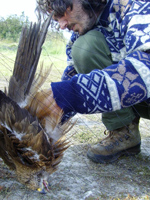 Fabrizio Sergio
Fabrizio Sergio
Associate Professor of Vertebrate Ecology
Estacion Biologica de Doñana
CSIC
C/ Americo Vespucio
41092 Seville
Spain
e-mail: fsergio@ebd.csic.es
Fabrizio Sergio earned his Ph.D. in Zoology from Oxford University (UK) in 2003. He worked as a contracted researcher at the Trento Museum of Natural Sciences (Italian Alps) between 1998-2004. Since 2005 he has been a researcher of the Estacion Biologica de Doñana (Spain). His research has focused on the behavior, ecology, and conservation of numerous diurnal and nocturnal raptors. He currently is managing an intensive demographic study on marked raptors in Doñana National Park.
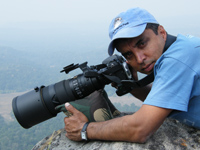 Munir Z. Virani
Munir Z. Virani
Africa Program Director
The Peregrine Fund
5668 West Flying Hawk Lane,
Boise, Idaho 83709 U.S.A.
e-mail: tpf@africaonline.co.ke
Munir Virani obtained his Ph.D. in Biological Sciences and Medicine from the University of Leicester (United Kingdom) in 2000. He has been associated with The Peregrine Fund since 1992 and currently heads their Africa and South Asian Raptor Conservation Programs. His research has focused on Augur Buzzards, African Fish Eagles, Sokoke Scops Owls, and more recently on Gyps vultures.
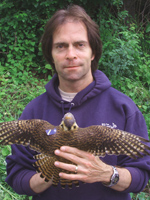 John A. Smallwood
John A. Smallwood
Associate Professor of Vertebrate Ecology
Department of Biology and Molecular Biology
Montclair State University
Montclair, NJ 07043 U.S.A.
voice: 973-655-5345
e-mail: smallwoodj@montclair.edu
John Smallwood earned his Ph.D. in Zoology from Ohio State in 1987 and did his post-doc at the University of Florida. Since 1994 he has been on the biology faculty at Montclair State University, where he teaches courses in ornithology, ecology, and conservation biology. His research has focused on the behavior and ecology of American Kestrels, and he currently is investigating the decline of this species in North America.
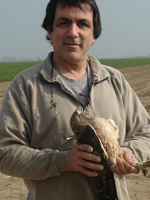 Gary M. Santolo
Gary M. Santolo
Senior Scientist
CH2M HILL, Inc.
Sacramento, CA 95833 U.S.A.
voice: 916-286-0283
e-mail: gsantolo@ch2m.com
Gary Santolo earned his B.S. and M.S. in Avian Sciences from the University of California, Davis, in 1984 and 1994. Since 1988 he has been a biologist for CH2M HILL in Sacramento, where he worked as a wildlife biologist and toxicologist collecting biological samples for contaminant studies and Ecological Risk Assessments. He also prepares biological assessments for endangered species and develops mitigation plans for Section 7 and 10(a) under the Endangered Species Act. He specializes in bird and mammal trapping, biological monitoring, and endangered species surveys. His research has focused on the effects of selenium to wildlife, especially reproductive effects, and he has designed and implemented several field and laboratory studies of reproductive effects of selenium on American kestrels.
 Laurie Goodrich
Laurie Goodrich
Senior Monitoring Biologist & Interim Director of Education
Hawk Mountain Sanctuary Association
Acopian Center for Conservation Learning
410 Summer Valley Road
Orwigsburg, PA 17961 U.S.A.
voice: 570-943-3411 x 106
fax: 570-943-2284
e-mail: goodrich@hawkmtn.org
Laurie Goodrich received her M.S. in Ecology from Rutgers University in 1982 and her Ph.D. in Ecology from Penn State University in 2010. She works as the Senior Monitoring Biologist and Interim Director of Education for Hawk Mountain Sanctuary Association in Kempton, PA, where she oversees the migration monitoring programs, assists with education outreach, and conducts research on the migration behavior and ecology of raptors. When not watching raptors, Laurie enjoys gardening, hiking, kayaking, and birding, all of which involve watching raptors as well.
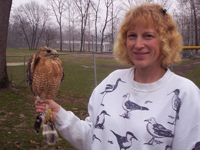 Cheryl Dykstra
Cheryl Dykstra
Raptor Environmental
7280 Susan Springs Drive
West Chester, OH 45069 U.S.A.
voice: 513-779-1744
e-mail: cheryldykstra@juno.com, journalofraptorresearch@gmail.com
Cheryl Dykstra earned her Ph.D. in Wildlife Ecology and Zoology from the University of Wisconsin-Madison in 1995. She has worked for the U.S. Fish and Wildlife Service and the U.S. Environmental Protection Agency and now is an independent researcher studying urban/suburban raptors, primarily Red-shouldered Hawks and Barred Owls. Her research interests include urban/suburban populations, reproductive success, habitat use, population dynamics, behavioral ecology, diet, and ecotoxicology.
 Petra Bohall Wood
Petra Bohall Wood
USGS West Virginia Coop. Fish & Wildlife Research Unit
322 Percival Hall, PO Box 6125
West Virginia University
Morgantown, WV 26506-6125 U.S.A.
voice: 304-293-5090
fax: 304-293-4826
e-mail: pbwood@wvu.edu
Petra Wood earned her Ph.D. and M.S. degrees from the University of Florida in Wildlife Ecology where she studied Bald Eagles and American Kestrels. Since 1992 she has been working as a Research Wildlife Biologist with the US Geological Survey West Virginia Cooperative Fish and Wildlife Research Unit. She is located in the Division of Forestry and Natural Resources at West Virginia University and holds an appointment as Adjunct Professor. Her primary research activities focus on how anthropogenic habitat changes, particularly from timber harvesting and energy development, affect wildlife populations, including raptors, in the Appalachian region. Petra has been active in RRF since 1983 and served for many years as Awards Committee Chair and as a Director.
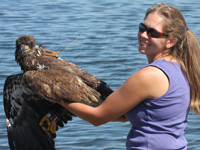 Libby Mojica
Libby Mojica
Research Wildlife Biologist
Center for Conservation Biology
College of William and Mary
PO Box 8795
Williamsburg, VA 23187-8795 U.S.A.
voice: 757-221-1680
e-mail: ekmojica@wm.edu
Libby Mojica earned her M.Sc. in Wildlife Ecology and Management from the University of Georgia in 2006. She works as a full time researcher for the Center for Conservation Biology, where she manages and conducts research projects on Bald and Golden Eagles, Peregrine Falcons, and Ospreys. Her research has focused on migration behavior, satellite telemetry, movement ecology, and communal roosting.